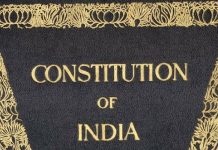This article is written by Pragati Yadav who is pursuing a Certificate Course in Arbitration: Strategy, Procedure and Drafting from Lawsikho.
Table of Contents
Introduction
The 2015 Arbitration and Conciliation (Amendment) Act (Amendment 2015) was an attempt to minimise judicial intervention in arbitration proceedings and promote the scope of institutional arbitration in India. as per the 246th Law Commission Report, The Arbitration & Conciliation Amendment Act, 2015 brought about a significant change in the procedure of appointing arbitrators pursuant to Section 11 of the Arbitration & Conciliation Act, 1996. It was in this regard that Section 11(6A) vide the 2015 amendment was introduced into the 1996 act. the relevant changes were as follows for the purposes of the present issue:
- The default appointing authority transferred to the High Court from the Chief Justice of the High Court in arbitration under Part I of the 1996 Act;
- The scope of jurisdiction under Section 11(6A) was limited to examining the existence of an arbitration agreement at the pre-reference level.
The aim was to minimise judicial interference in such a way that the arbitral proceedings were not disrupted at the threshold when one of the parties raised preliminary objections. Sub-section (6A) was omitted (still yet to be notified) in the new 2019 amendments to the Act. The purpose of this article is to address the scope of the role of the Court in appointing an arbitrator to vide the 2015 amendment and its corresponding omission in 2019 in accordance with Section 11 (6A).
This article has been divided into four parts, Part I of this article will provide the introduction of the Article. Part II of this Article aims to analyse Section 11(6) before the 2015 Amendment in light of the Supreme Court’s judgement. Part III provides the Overview of the 2015 Amendment Act in relation to Section 11 and interpretation of the Courts thereto. Part IV of the Article discusses the dual test to examine the “existence” and “validity” of an arbitration agreement pursuant to Section 11(6) of the Act, and Part IV also addresses the changes made to the 2019 Act and the recent decisions of the Supreme Court. Finally, Part V will state the concluding remarks of the author.
Position prior to the 2015 act
Before the 2015 Amendment Act came into force, much debate had surrounded the nature of the Chief Justice’s or his designate’s appointment power under Section 11.
In Konkan Railway Corporation Limited v. Mehul Construction Company, the court held that the power of the chief justice under section 11 (6) of the 1996 Act was of an administrative nature and That, when appointing an arbitrator, the chief justice or his designate was not acting as a judicial authority. A larger court bench in Konkan Railway Corporation Limited v. Rani Construction Private Limited, strengthened this view.
On the other hand, in the case of SBP & Co. v. Patel Engineering, it was held that the powers exercised by the court in handling an application under Section 11 were ‘judicial powers’ and not merely ‘administrative powers.’
The chief justice under Section 11(6) is required to adjudicate on contentious issues such as the existence of a valid arbitration agreement. Thus, as evident, prior to 2015 Amendment Act, the criteria were two-fold, i.e. existence & validity (Dual Filter Test), when deciding on the application of Section 11(6). As it has since transpired, the SBP decision turned out to be the delight of a litigating lawyer, in that it extended the ambit of the authority exercised by the courts and also paved the way for many objections, such as limitation, the existence of live disputes, res judicata raised by the parties at the level of consideration of an application under section 11(6).
This was found to be contrary to the Act’s objectives and the principle enshrined in Section 5 of the Act i.e. ‘least judicial intervention’. In order to resolve all the challenges to the appointment of an arbitrator, in National Insurance Co Ltd. v Boghara Polyfab Pvt Ltd, the Supreme Court has divided the issues into three groups i.e. ‘must’ be dealt with, ‘may’ be dealt with and ‘cannot/must’ be dealt with in application under Section. The Court held as under:
“The issues (first category) to be decided by the Chief Justice / his appointee are:
(A) If the party to the appeal has approached to the appropriate High Court.
(B) Whether an arbitration consensus has been made and the party applied under Section 11 of the Act is a party to that agreement or not.
The issues (second category) which may be determined by the Chief Justice / his designate (or left to the Arbitral Tribunal’s decision) are:
(A) Whether the claim is a dead claim (long-barred) or a live claim.
(B) if the parties have completed the contract/transaction without objection by recording the satisfaction of their mutual rights and responsibilities or by accepting the final payment.
The questions (third category) which should be left solely to the Arbitral Tribunal by the Chief Justice / his designate are:
(a) If the claim is covered by an arbitration clause
(b) The merits/any claim involved in the arbitration.”
Thus, in the light of the decisions in SBP and Co and Boghara Polyfab, a broad interpretation has been given to the extent of the power conferred on the court under Section 11(6) of the 1996 Act. This stance was retained until the amendment was passed in 2015.
Overview of the 2015 Amendment Act in relation to Section 11
Law Commission of India proposed various amendments to the Act in August 2014. One such amendment was the introduction of Section 11(6A), which suggested that the scope of the examination in Section 11 proceedings should be restricted to ‘examining the existence of an arbitration agreement.’ The Arbitration and Conciliation Amendment Act, 2015 was enacted on the basis of the Commission’s recommendations and sub-section 6A was inserted, which confines the scope and ambit of Section 11 proceedings.
Therefore, taking into account the wider objectives of the 2015 amendment, The proposed manner of dealing with the application under Section 11 was based on the prima facie existence of a valid arbitration agreement. If it is found by the judicial authority that the arbitration agreement exists prima facie, it shall refer the dispute to arbitration and leave the issue of the validity and enforceability of the arbitration agreement to be resolved by the arbitral tribunal finally. However, if the judicial authority determines that there is no arbitration agreement, The conclusion will be final, and there will be no reference is made to this.
The effect of the amendment implemented by Section 11(6A) of the 2015 amendment was examined and discussed in depth by the court in Duro Felguera S A v. Gangavaram Port Limited, a two-judge Bench of the Apex Court, while ruling on the issue of the appointment of an arbitrator, interpreted in its literal sense by Section 11(6A) of the Act, argues that The courts are only required to determine the existence of an arbitration agreement and having done so, to give effect to that agreement. No other issue can be considered or should be considered by the courts, following the addition of Section 11(6A). The courts are only required to determine the existence of an arbitration agreement and by doing so, the agreement is being effected. No other issue can be considered or should be considered by the courts, following the addition of Section 11(6A).
following the Felguera’s dictum, in Mayavti Trading Private Limited. v. Pradyuat Deb Burman, the Supreme Court reiterated that Section 11(6A) is limited to the examination of the existence of an arbitration agreement and is to be read in the narrow sense provided for in Duro Felguera’s judgement.
Dual filter and existence test under Section 11(6A)
Shortly after the verdict in Duro Felguera, in United India Insurance Company Limited. And Others. v. Hyundai Engineering and Construction Company Limited. and Others, the three-judge bench of Supreme Court took have taken diametrically opposite views.
In examining the existence of an arbitration agreement, the Court continued to examine whether the conditions for giving effect to such agreements had been met in the facts of the case. Having found that the preconditions for giving effect to the arbitration clause which were contractually stipulated had not been satisfied, reference to arbitration has been rejected by the Court. Doing so, the Court again extended the permitted scope of examination in the proceedings under Section 11.
Furthermore, the court explained that the repeal of Section 11(6A) would entail the automated appointment of tribunals even for claims which are not legally arbitrable in relation to tenancy, guardianship, insolvency, winding up of companies and other issues pertaining to rights in rem. The appointment can eventually be made futile if the arbitral tribunal ultimately decides that a valid arbitration agreement does not exist, leading to further delays.
In a sudden turn of events, the court’s position at United India Insurance Company Ltd. is an outlier in India’s general pattern of developments in arbitration. The Lok Sabha passed the Arbitration and Conciliation (Amendment) Bill 2018 (Bill 2018), on 10 August 2018.
The proposed changes in the bill are premised on the recommendations of the High-Level Committee on Reviewing the Institutionalization for arbitral proceedings in India (Srikrishna Committee), which was formed and chaired by a former judge of the Supreme Court, Justice B N Srikrishna. It was recommended by the Srikrishna Committee that Section 11 shall be amended to specify that the appointment of arbitrators under that section shall only be determined by an arbitral institution appointed by the Supreme Court (in the case of international commercial arbitration) or the High Court (in the case of all other arbitrations), without requiring the courts to determine the existence of an arbitration agreement, thus, further diluting the role of the courts under this Section.
in Ritika Diwan and Ors. v. Supertech Limited, decided on 13.11.2019 that, in the light of Mayavti Trading, the Delhi High Court had interpreted Section 11(6A) to mean that prior to deciding on such an application, the Court had to examine the existence of an Arbitration Agreement between both the parties. Consequently, judgments post Ritika Diwan follow Mayavti Trading’s Dual Filter Test.
In Prime Market Reach Private Limited v. Supreme Advertising Limited, decided on 17 December 2019, After examining the validity of the arbitration agreement, the Court found that the clause was invalid and refused to refer to arbitration.
In Devi Fatehpuria v. Jugal Kishore Shyam and Co. and Ors Prakash, decided on 13.03.2020, “It is a settled rule that the Court must only examine the existence and validity of the Arbitration Agreement pursuant to Section 11(6) of the Act while examining a petition.”
Moreover, in all the cases referred to above after Ritika Diwan, the Delhi High Court interpreted Mayavti Trading to mean that the High Court’s mandate to examine a petition pursuant to Section 11(6) of the Act would be confined to examining the existence and validity of the Arbitration Agreement.
Conclusion
The 2019 amendments aim to limit judicial interference and to expand the role of the arbitral institution in the determination of preliminary questions under Section 11, with the challenge of analysing the jurisdiction of the arbitral institutions under Section 11 of the Act. If the legislature wanted to limit the power or role of the arbitral institutions(as it did, by the 2015 amendment, for the Supreme Court or the High Court), they would have merely replaced The terms “Supreme Court or, as the case may be, the High Court” in subsection (6A) with “Arbitral Institution”. Having not done so, it is hard to predict whether the Arbitral Institution’s powers would be limited to “appointing an Arbitral Tribunal” and determining “Arbitration Agreement” among the parties. However, it is uncertain whether orders passed by the Arbitral Institutions will be subject to a challenge. If orders passed by the arbitral institutions are called into question that is inevitable, will the Arbitral Tribunal appointment process take longer?
If the above role is to be delegated to arbitral institutions, specific rules and guidelines would need to be formulated and implemented. The status quo is insufficient and suffers from multiple infirmities. The 2018 Bill may not explicitly describe the scope of the Arbitration Council of India (ACI) role and its powers, which is quite essential if the responsibility of accrediting institutions is delegated to the ACI, which would eventually be appointed to select arbitrators by the Supreme Court and the High Court, and it may also determine the existence of a legitimate arbitration agreement.
According to Section 5 of the Act, it says that the minimal intervention of the court should be there in the case of Arbitration to obtain the prompt and expeditious outcome. Some degree of judicial interference is necessary to provide the certainty and minimize the number of appeals and challenges resulting from pre-arbitration decisions until we have any comprehensive system regarding the same.
LawSikho has created a telegram group for exchanging legal knowledge, referrals and various opportunities. You can click on this link and join:
 Serato DJ Crack 2025Serato DJ PRO Crack
Serato DJ Crack 2025Serato DJ PRO Crack











 Allow notifications
Allow notifications



